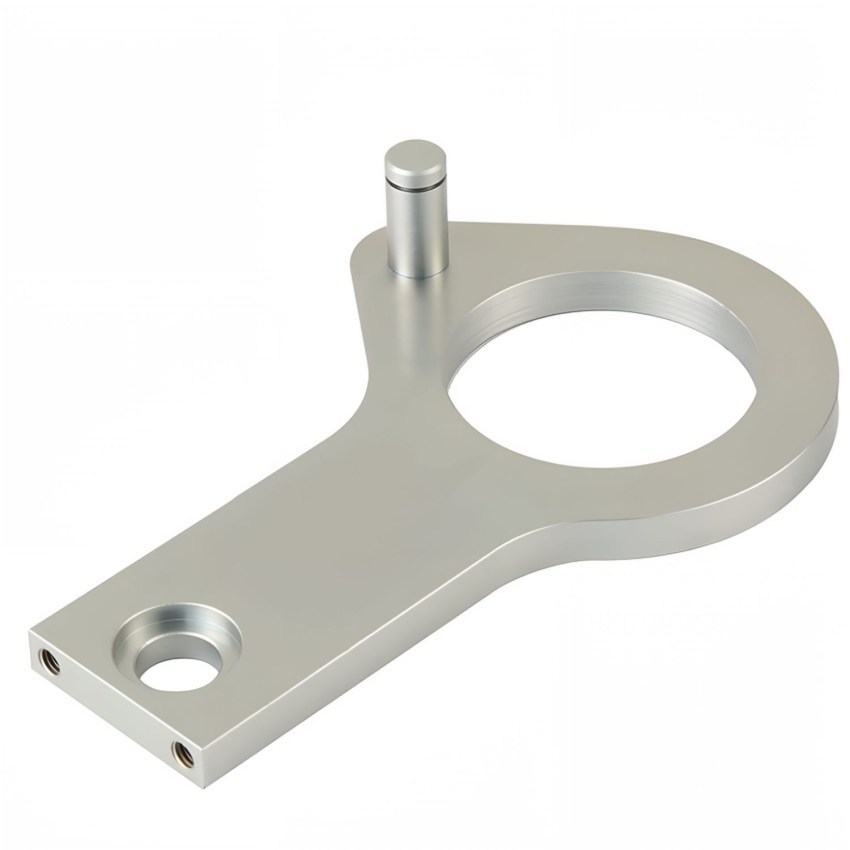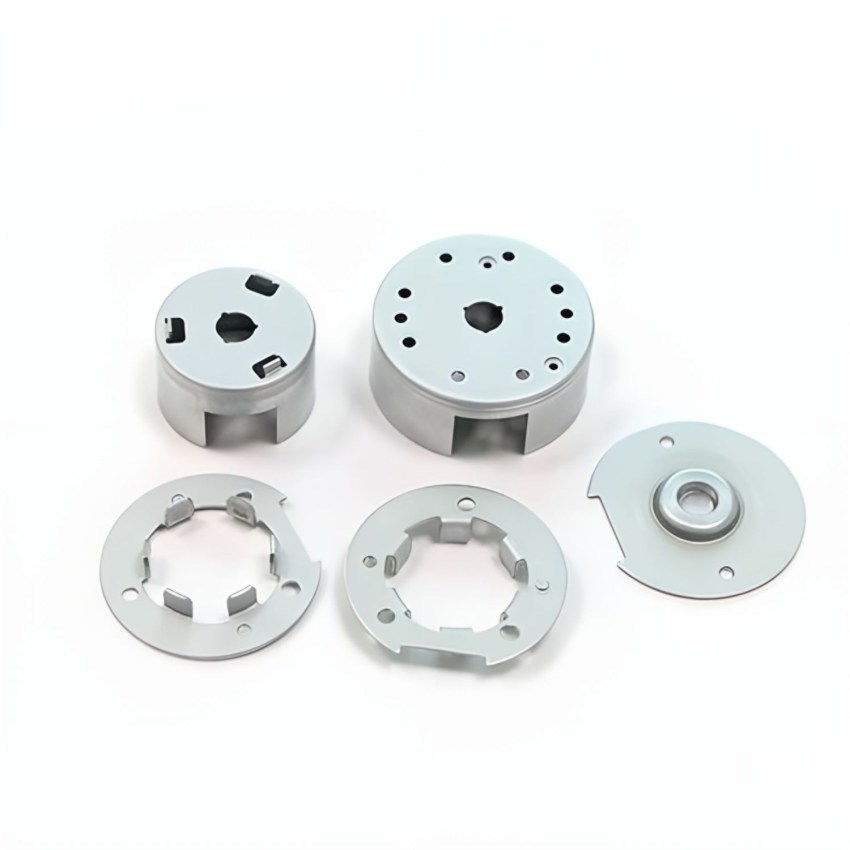Comparing CNC Machining and Traditional Methods for Aluminum Parts: A Comprehensive Guide
Release time:
2025-03-15
Comparing CNC Machining and Traditional Methods for Aluminum Parts In the world of manufacturing, the choice of methods to produce aluminum parts significantly impacts quality, efficiency, and cost. As industries evolve, the debate between **CNC machining** and **traditional manufacturing methods** intensifies. In this article, we will provide an in-depth analysis of both approaches, helping you m

Comparing CNC Machining and Traditional Methods for Aluminum Parts
In the world of manufacturing, the choice of methods to produce aluminum parts significantly impacts quality, efficiency, and cost. As industries evolve, the debate between **CNC machining** and **traditional manufacturing methods** intensifies. In this article, we will provide an in-depth analysis of both approaches, helping you make an informed decision for your aluminum part fabrication needs.
Table of Contents
- 1. Introduction to CNC Machining and Traditional Methods
- 2. What is CNC Machining?
- 3. Advantages of CNC Machining for Aluminum Parts
- 4. Understanding Traditional Manufacturing Methods
- 5. Advantages of Traditional Manufacturing Methods
- 6. Comparing CNC Machining and Traditional Manufacturing
- 7. Cost Analysis: CNC Machining vs. Traditional Methods
- 8. Conclusion
- 9. FAQs
1. Introduction to CNC Machining and Traditional Methods
Manufacturing methods for aluminum parts have significantly advanced over the years. With the rise of technology, **CNC machining** has emerged as a leading technique, offering high precision and automation. Traditional methods, on the other hand, include various processes like manual machining, casting, and forging, each with its unique advantages and limitations.
2. What is CNC Machining?
**CNC (Computer Numerical Control) machining** is a modern manufacturing process that employs computerized controls to manipulate machine tools. This technology uses CAD (Computer-Aided Design) programs to design parts and translate them into precise movements of machinery. The CNC machines can perform various operations, including milling, turning, drilling, and grinding, allowing for the production of intricate and complex aluminum parts with high precision.
Key Features of CNC Machining
- Automation: Reduces human error and enhances efficiency.
- Precision: Achieves tolerances as tight as ±0.005 inches.
- Versatility: Capable of producing a wide range of geometries and shapes.
- Reproducibility: Ensures consistent quality across multiple parts.
3. Advantages of CNC Machining for Aluminum Parts
CNC machining offers numerous advantages, making it a preferred choice for many manufacturers. Here are some key benefits:
Increased Efficiency
With automation, CNC machining significantly reduces production time. Once programmed, a CNC machine can operate continuously, producing large quantities of parts without the need for manual intervention.
Enhanced Precision and Accuracy
CNC machines provide unparalleled accuracy, minimizing tolerances and ensuring that each part meets strict specifications. This high level of precision is crucial in industries where exact measurements are critical, such as aerospace and automotive.
Cost-Effectiveness in Large Production Runs
While the initial setup costs for CNC machining may be higher compared to traditional methods, the long-term benefits, especially for large production runs, often outweigh these costs. The ability to produce high volumes quickly and with minimal waste results in lower per-piece costs.
4. Understanding Traditional Manufacturing Methods
Traditional manufacturing methods encompass a variety of techniques that have been used for centuries. These include:
- **Manual Machining**: Involves human operators using hand tools and machines.
- **Casting**: Pouring molten aluminum into a mold to create parts.
- **Forging**: Shaping aluminum using compressive forces.
Each method has its own set of benefits and limitations, depending on the desired application and production volume.
5. Advantages of Traditional Manufacturing Methods
While CNC machining is gaining popularity, traditional methods still hold relevance. Here are some advantages associated with traditional manufacturing processes:
Lower Initial Investment
For small businesses or startups, traditional methods often require a lower initial investment, as the machinery and technology may be less expensive compared to CNC systems.
Flexibility for Custom Projects
Traditional methods can sometimes offer greater flexibility for custom projects, especially for smaller runs where changes may be needed frequently.
Ability to Work with Various Materials
Some traditional methods, such as casting and forging, can handle a wider range of materials beyond aluminum, allowing for diverse production capabilities.
6. Comparing CNC Machining and Traditional Manufacturing
A direct comparison between CNC machining and traditional manufacturing methods reveals distinct advantages and disadvantages for each. Here are some critical factors to consider:
Speed of Production
CNC machining outpaces traditional methods in terms of speed, especially for large production runs. The ability to automate processes allows manufacturers to meet deadlines more effectively.
Quality of Finished Parts
In terms of quality, CNC machining excels due to its precise control over dimensions and tolerances. Traditional methods may produce higher variability in quality, which can be a disadvantage for industries requiring strict adherence to specifications.
Skill Requirements
CNC machining necessitates skilled operators who can program and maintain the machines, whereas traditional methods require skilled craftsmen with expertise in manual operation and techniques.
7. Cost Analysis: CNC Machining vs. Traditional Methods
When evaluating the cost-effectiveness of CNC machining versus traditional methods, it is essential to consider several factors:
Setup Costs
The setup costs for CNC machining can be significant due to the need for CAD programming and machine calibration. In contrast, traditional methods may require less investment in technology but can incur higher labor costs.
Production Costs
CNC machining generally has lower production costs for large runs due to its efficiency and speed. Traditional methods may be more cost-effective for smaller runs or one-off designs, but they can lead to higher costs per piece when scaling up.
Maintenance and Downtime
CNC machines may require regular maintenance, which can lead to downtime if not addressed promptly. Traditional methods, while often more robust, can also experience downtime due to manual handling and operator limitations.
8. Conclusion
Choosing between CNC machining and traditional manufacturing methods for aluminum parts ultimately depends on your specific needs, budget, and production volume. CNC machining offers superior precision, efficiency, and scalability, making it ideal for large production runs and complex geometries. Traditional methods, however, remain relevant for custom projects and lower production volumes, providing flexibility and lower initial costs. By understanding the unique advantages of each method, you can make an informed decision that aligns with your manufacturing goals.
9. FAQs
What is the main advantage of CNC machining over traditional methods?
The primary advantage of CNC machining is its ability to produce parts with high precision and consistency at a faster rate, particularly for large production runs.
Are traditional manufacturing methods still relevant today?
Yes, traditional manufacturing methods remain relevant, especially for custom projects or low-volume production where flexibility and craftsmanship are essential.
How do costs compare between CNC machining and traditional methods?
CNC machining often has higher initial setup costs but can be more cost-effective for larger production runs. Traditional methods may be cheaper for small runs but can become less economical with scale.
Can CNC machines work with materials other than aluminum?
Yes, CNC machines can work with a variety of materials, including plastics, metals, wood, and composites, making them versatile for different applications.
What industries benefit the most from CNC machining?
Industries such as aerospace, automotive, medical devices, and electronics benefit significantly from CNC machining due to its precision and ability to produce complex parts.
Key words:




